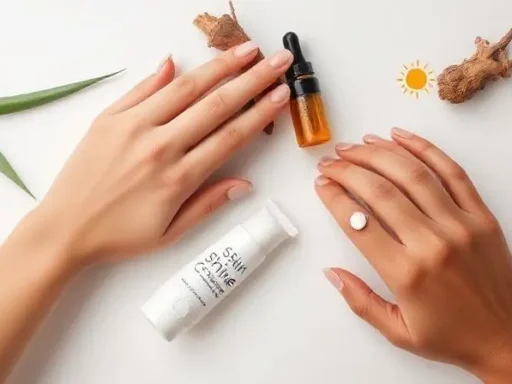If you’re chasing that perfect sun-kissed glow, understanding how the UV index works could be your secret weapon. The UV index plays a critical role in determining how effectively you tan while staying safe under the sun’s rays. But what UV index is best for tanning? This guide will walk you through everything you need to know to achieve a radiant tan without risking your skin’s health.
Sunbathers, beauty enthusiasts, and beachgoers alike—get ready to explore the science behind UV levels, how to tan effectively, and, most importantly, how to do it safely.
What UV Index is best for Tanning?
First you have to understand what the UV index measures are before knowing what the best UV index for tanning is. The UV index is a standardized tool used to gauge the strength of the sun’s ultraviolet (UV) radiation at a specific time and place. It ranges from 0 (minimal UV exposure) to 11+ (extreme UV radiation).
When it comes to tanning, the ideal UV index lies between 3 and 7. These levels provide enough UV radiation to stimulate melanin production in your skin—the pigment responsible for that bronzed look—without exposing you to excessive harm. However, caution is key. Too much UV rays exposure, even at a normal UV index, can lead to sunburn and long-term skin damage.
Understanding the UV role in tanning is improtant for anyone wishing to get a golden glow while maintaining their skin’s health.
Understanding UV Index for Tanning
The UV index is a critical metric for anyone planning to spend time under the sun. Developed by dermatologists and atmospheric scientists, the index serves as a guide to understanding how intense UV radiation levels are throughout the day.
Low UV Index (0–2)
At these levels, UV exposure is minimal, which means it’s unlikely to produce much of a tan. It’s ideal for avoiding sun damage entirely but won’t satisfy someone looking to deepen their skin tone.
Moderate UV Index (3–5)
The moderate UV index range is considered safe and effective for gradual tanning. With proper precautions like sunscreen and hydration, this is an optimal level for healthy sun exposure.
High and Very High UV Index (6–10)
These levels deliver faster tanning results but carry a higher risk of sunburn and long-term skin damage. Extra caution, like wearing sunscreen with SPF 30+ and avoiding long sun exposures, is absolutely essential.
Extreme UV Index (11+)
At this level, even a short amount of sun exposure can harm your skin. Avoid tanning during these conditions as the risk of sunburn, heat exhaustion, and skin cancer increases exponentially.
By understanding the UV index, you can make informed decisions about when and how long to stay in the sun for a safe tanning experience.
What is the Best UV Index for Tanning?
Simply put, the best UV index for tanning is between 3 and 5. This range allows for gradual melanin production without overly aggressive exposure to harmful UVB rays, which cause sunburn. Think of it as the sweet spot for getting a healthy, natural tan and minimizing skin damage.
It’s recommended to tan for short intervals—15-20 minutes per side—during these UV levels, and always keep sunscreen applied even if you’re eager to tan faster.
Optimal UV Index: Safe Tanning Tips for a Sun-Kissed Glow
Want to turn those sunny moments into a safe, sun-kissed glow? Follow these tips to maximize tanning while keeping your skin protected:
Always Use Sunscreen
Yes, even when tanning! Apply a broad-spectrum sunscreen with SPF 30 or higher to shield your skin from harmful rays while still allowing for melanin production.
Tan during the Right Hours
The UV index changes throughout the day. Plan your tanning sessions in the early morning or late afternoon when the UV index tends to range from 3 to 5. Avoid midday exposure, as UV radiation peaks during these hours.
Hydrate and Protect Your Skin
Drink plenty of water before and after tanning sessions to keep your skin hydrated. Moisturized skin tans better and holds onto your tan longer.
Use Tanning Enhancers
Lotions or oils specifically formulated for tanning can help enhance the process, but remember to choose ones that also include SPF protection.
Limit Your Exposure
Don’t overdo it. Tanning for extended periods—even with sunscreen—can lead to overexposure or burns.
What Level of UV is Sufficient to Get a Tan?
The minimum UV index level to activate tanning is typically 3, with higher ranges optimizing results. At UV levels below 3, the impact of UVB rays on the skin isn’t sufficient to stimulate significant melanin production. Levels between 3 and 5 are ideal for most people to see gradual results. However, individual skin types vary, and people with lighter skin tones may notice tanning effects faster than those with darker skin tones.
Effective UV Index for Tanning
Several factors influence how effective your tanning session will be, even at the optimal UV index:
1
Skin Type:
Fair-skinned individuals tan more slowly and are more prone to burns compared to those with darker skin tones.
2
Time of Day:
UV rays is strongest between 10 AM to 4 PM. To tan safely, prepare your sessions early in the morning or late afternoon.
3
Geographic Location:
Areas closer to the equator experience greater UV radiation. Plan accordingly based on where you are tanning.
4
Season:
Summer months provide high levels of UV, while winter usually cannot equip you for tanning.
Tanning Safety: Choosing the Ideal UV Index
UV index has to be chosen in such a way that it offers maximum efficiency with minimum risks while tanning. The preferable range of the UV index for tanning is 3 to 5, heating enough to tan without excessive injury. Be mindful of your time outdoors and reapply sunscreen every two hours. Protective clothing and a wide-brimmed hat are great additions for shielding areas of your body not involved in tanning.
Good UV Index for Tanning: Factors to Consider
Finally, here are several external factors to consider before venturing out into the sun:
- Reflection Surfaces: Sand, water, and even snow can reflect UV rays, intensifying their impact on your skin.
- Cloud Cover: Don’t be fooled by overcast skies! UV rays penetrate clouds, so you can still tan and even burn on cloudy days.
- Altitude: Higher altitudes experience stronger UV radiation, so take extra caution when tanning in mountainous areas.
Conclusion
Understanding what UV index is best for tanning empowers you to get a healthy glow while protecting your skin. Aim for UV index levels between 3 and 5, follow safe tanning practices, and always prioritize sun protection. With the right approach, you can enjoy the sun without the harmful consequences.
Your skin deserves the best care—so tan wisely and confidently!






